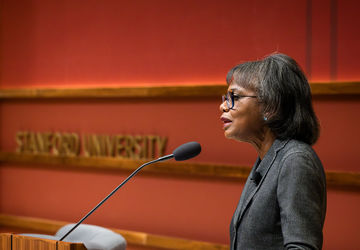Men, masculinity and the persistent nature of gender inequality
Understanding the persistent nature of gender inequality requires an examination of men and women, masculinity and femininity. Too often, when we talk of gender, we talk of women; when we think of race, we think of people of color. The dominant groups—those who hold most power in society, such as men and white people—often go unexamined and unanalyzed.
When it comes to sexual assault, we focus on women to understand its ramifications and solutions. While it is undoubtedly important to focus on women's experiences, because men are most frequently the perpetrators and women the victims of sexual assault, we need to turn our focus to men. This is why we begin our “Breaking the Culture of Sexual Assault” series with a focus on masculinity. To advance discussions about sexual violence, we ask: What role do men play in both perpetuating and halting sexual violence? What are the norms or expectations we have of men that encourage certain behaviors and penalize others? How can men work together, and in tandem with women, to create a more peaceful and just world?
Scholarly research has found that the expectations we have of men are as narrow as they are clear. Men are expected to be leaders, tough, physically strong, dominant, unemotional and assertive, to name a few. This is a limited set of expectations that allow for little deviation. Boys learn from an early age that non-masculine or “feminine” qualities are undesirable in them. These expectations are taught not only from their parents, but also through socialization in schools and media. To be sure, women are also held to restrictive standards of femininity, but men are penalized more than women for violating gender expectations.
According to “Breaking the Culture” symposium speaker Dr. Jackson Katz, these dominant characteristics of masculinity go hand and hand with violence, sexual aggression and sexual assault. When men are taught that dominance and aggression are valued, an extreme manifestation of that is what he calls “gender based violence,” or men committing violence against women. It also means that when men commit such violence, it is largely unremarkable, given its alignment with dominant values and expectations of men. While masculinity standards vary by race and class, they are all versions of these dominant expectations.
Our second symposium speaker, USC professor Dr. Michael Messner, examines how men organize to stop violence against women. He found that over the last forty years, men who are feminists have organized both with women feminists and in all-male feminist groups, to confront and change these standards of masculinity. Messner has interviewed men across the country in a diverse range of communities educating other men. These men are teaching each other to feel more comfortable deviating from standards of masculinity and demonstrating how to stop gender-based violence in their relationships, through activism and through galvanizing other men in their communities.
The equally important yet different approaches to understanding masculinity by Katz and Messner reflect our emphasis on not only understanding the problems perpetuated by masculinity, but also on how many men are leading the way in creating change. We can only break the culture of sexual assault if both women and men are change agents.


